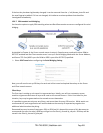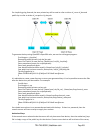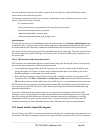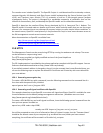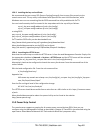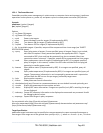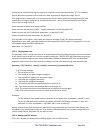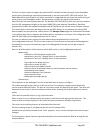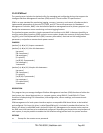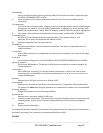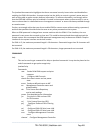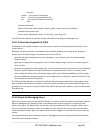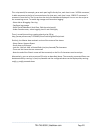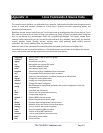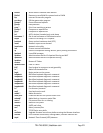The first is to have scripts to support the particular RPC included in either the open source PowerMan
project (http://sourceforge.net/projects/powerman) or the open source NUT UPS Tools project. The
PowerMan device specifications are rather weird and it is suggested that you leave the actual writing of
these scripts to the PowerMan authors. Documentation on how they work can be found at
http://linux.die.net/man/5/powerman.dev. The Network UPS Tools (NUT) project has recently moved on
from its UPS management origins to also cover SNMP PDUs (and embrace PowerMan). Black Box
progressively includes the updated PowerMan and NUT build into the console server firmware releases.
The second path is to directly add support for the new RPC devices (or to customize the existing RPC
device support) on your particular console server. The Manage: Power page uses information contained
in /etc/powerstrips.xml to configure and control devices attached to a serial port. The configuration also
looks for (and loads) /etc/config/powerstrips.xml if it exists.
The user can add their own support for more devices by putting definitions for them into
/etc/config/powerstrips.xml. This file can be created on a host system and copied to the Management
Console device using scp. Alternatively, login to the Management Console and use ftp or wget to
transfer files.
Here is a brief description of the elements of the XML entries in /etc/config/powerstrips.xml.
<powerstrip>
<id>Name or ID of the device support</id>
<outlet port="port-id-1">Display Port 1 in menu</outlet>
<outlet port="port-id-2">Display Port 2 in menu</outlet>
...
<on>script to turn power on</on>
<off>script to power off</off>
<cycle>script to cycle power</cycle>
<status>script to write power status to /var/run/power-status</status>
<speed>baud rate</speed>
<charsize>character size</charsize>
<stop>stop bits</stop>
<parity>parity setting</parity>
</powerstrip>
The id appears on the web page in the list of available devices types to configure.
The outlets describe targets that the scripts can control. For example, a power control board may
control several different outlets. The port-id is the native name for identifying the outlet. This value will
be passed to the scripts in the environment variable outlet, allowing the script to address the correct
outlet.
There are four possible scripts: on, off, cycle and status.
When a script is run, its standard input and output is redirected to the appropriate serial port. The
script receives the outlet and port in the outlet and port environment variables respectively.
The script can be anything that can be executed within the shell.
All of the existing scripts in /etc/powerstrips.xml use the pmchat utility.
pmchat works just like the standard unix "chat" program, only it ensures interoperation with the port
manager.
The final options, speed, charsize, stop and parity define the recommended or default settings for the
attached device.
_____________________________________________________________________
724-746-5500 | blackbox.com Page 265




